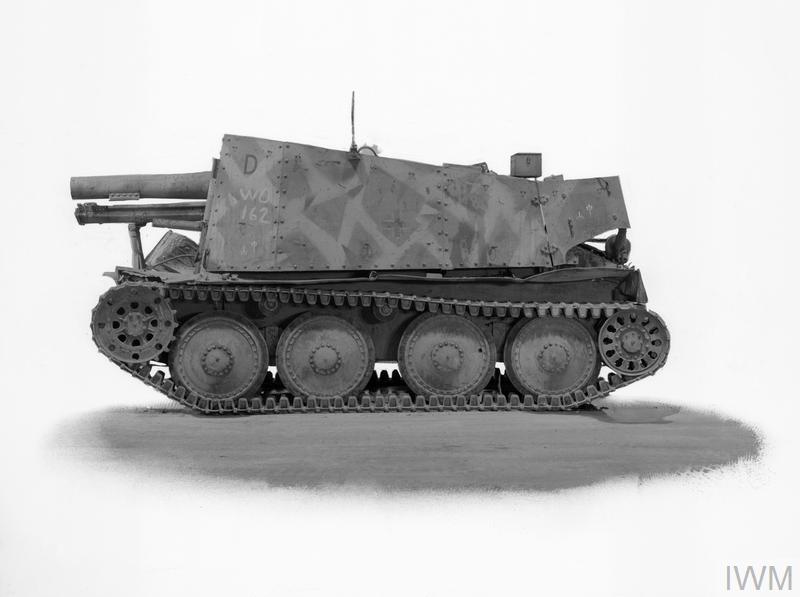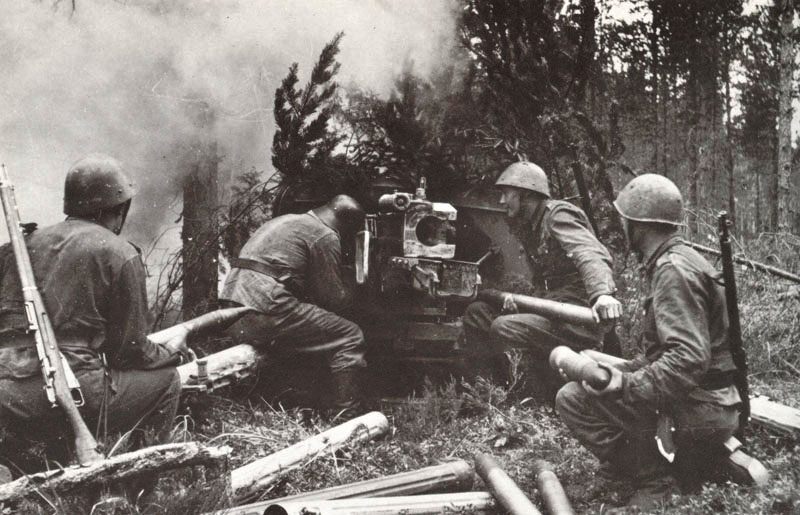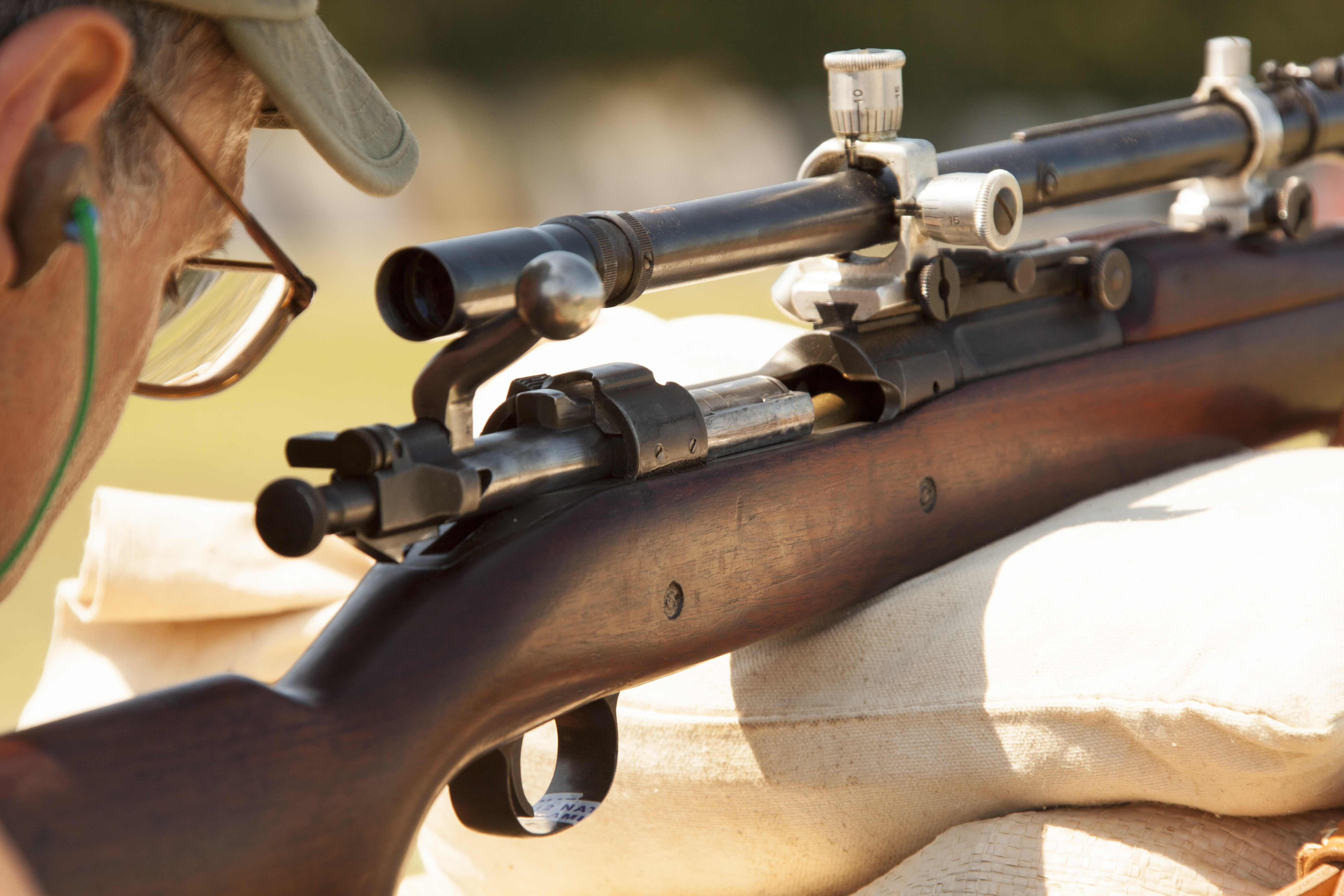|
Marder III
''Marder'' III was the name for a series of World War II German tank destroyers. They mounted either the modified ex-Soviet 76.2 mm F-22 Model 1936 divisional field gun, or the German 7.5 cm PaK 40, in an open-topped fighting compartment on top of the chassis of the Czechoslovak Panzer 38(t). They offered little protection to the crew, but added significant firepower, which was able to destroy the thick-armored T-34s, compared to contemporary German tanks. They were in production from 1942 to 1944 with three variants, the Marder III, Marder III H, and Marder III M, and served on all fronts until the end of the war, along with the similar Marder II. The German word ''Marder'' means " marten" in English. History In the early stages of Operation Barbarossa, the Wehrmacht felt the need for a more mobile and more powerful anti-tank solution than the existing towed anti-tank guns, such as the '' 3.7 cm Pak 36'', or self-propelled tank destroyers, such as the (mounted with the ... [...More Info...] [...Related Items...] OR: [Wikipedia] [Google] [Baidu] |
Grille (artillery)
The 15 cm sIG 33 (Sf) 38(t), also known as (German: "cricket") was a series of self-propelled artillery vehicles used by Nazi Germany during World War II. The series was based on the Czech Panzer 38(t) tank chassis and used a 15 cm sIG 33 infantry gun. Development The original order for 200 units of the , was to be based on the new 38(t) Ausf. M chassis that BMM (''Böhmisch-Mährische Maschinenfabrik'') was developing, however, delays caused production to start on the 38(t) Ausf. H chassis. H The first variant of the was based on the Panzer 38(t) Ausf. H chassis, which had its engine in the rear. Instead of a turret, the vehicle had a low-slung superstructure and fighting compartment. The (heavy infantry gun) was mounted in the front of this armored compartment. Being built on a tank chassis, its hull armour was at the front and its superstructure armour was at the front. A total of 200 (including one prototype) were produced in the BMM (erstwhile ČKD ... [...More Info...] [...Related Items...] OR: [Wikipedia] [Google] [Baidu] |
Protectorate Of Bohemia And Moravia
The Protectorate of Bohemia and Moravia was a partially-annexation, annexed territory of Nazi Germany that was established on 16 March 1939 after the Occupation of Czechoslovakia (1938–1945), German occupation of the Czech lands. The protectorate's population was mostly ethnic Czechs, Czechs. After the Munich Agreement of September 1938, the Third Reich had annexed the German-majority Sudetenland to Germany from Second Czechoslovak Republic, Czechoslovakia in October 1938. Following the establishment of the independent Slovak Republic (1939–1945), Slovak Republic on 14 March 1939, and the German occupation of the Czech rump state the next day, German leader Adolf Hitler established the protectorate on 16 March 1939, issuing a proclamation from Prague Castle. The creation of the protectorate violated the Munich Agreement.C The protectorate remained nominally autonomous and had a dual system of government, with German law applying to ethnic Germans while other residents had th ... [...More Info...] [...Related Items...] OR: [Wikipedia] [Google] [Baidu] |
Wehrmacht
The ''Wehrmacht'' (, ) were the unified armed forces of Nazi Germany from 1935 to 1945. It consisted of the German Army (1935–1945), ''Heer'' (army), the ''Kriegsmarine'' (navy) and the ''Luftwaffe'' (air force). The designation "''Wehrmacht''" replaced the previously used term (''Reich Defence'') and was the manifestation of the Nazi regime's efforts to German rearmament, rearm Germany to a greater extent than the Treaty of Versailles permitted. After the Adolf Hitler's rise to power, Nazi rise to power in 1933, one of Adolf Hitler's most overt and bellicose moves was to establish the ''Wehrmacht'', a modern offensively-capable armed force, fulfilling the Nazi regime's long-term goals of regaining lost territory as well as gaining new territory and dominating its neighbours. This required the reinstatement of conscription and massive investment and Military budget, defence spending on the arms industry. The ''Wehrmacht'' formed the heart of Germany's politico-military po ... [...More Info...] [...Related Items...] OR: [Wikipedia] [Google] [Baidu] |
PaK 40
The 7.5 cm Pak 40 (''7,5 cm Panzerabwehrkanone 40'') was a German 75 millimetre anti-tank gun of the Second World War. The gun was developed in 1939–1941 and entered service in 1942. With 23,303 examples produced, the Pak 40 formed the backbone of German anti-tank guns for the later part of World War II, mostly in towed form, but also on a number of self propelled artillery such as the '' Marder'' series of ''Panzerjäger''. A modified version of the gun designed specifically for vehicle-mounting was the 7.5 cm KwK 40, which differed primarily in using more compact ammunition, thereby allowing more rounds to be carried inside the vehicles. The KwK 40 armed many of the German mid-war tank designs such as the Panzer IV, as well as tank destroyer designs, replacing the Pak 40 in the latter role. The Pak 40 may be referred to as the 7.5 cm L/46, referring to its calibre and the barrel's length in calibres. There were two versions of the KwK 40, which would be referred t ... [...More Info...] [...Related Items...] OR: [Wikipedia] [Google] [Baidu] |
Sonderkraftfahrzeug
''Sonderkraftfahrzeug'' (abbreviated ''Sd.Kfz.'', German language, German for "special purpose vehicle") was the Military logistics, ordnance inventory designation used by Nazi Germany before and during World War II for military vehicles; for example ''Sd.Kfz.'' 101 for the Panzer I, and ''Sd.Kfz.'' 251 for the Sd.Kfz. 251, armored personnel carrier made by Hanomag. The Reichswehr and its successor, the Wehrmacht began systematically allocating numbers to its vehicles from around 1930, including horse-drawn vehicles, cars and trucks, combat vehicles, and trailers. Sd.Kfz. numbers were assigned to armored vehicle, armored, continuous track, tracked, and half-tracked vehicles. Cars and trucks were allocated Kfz. numbers and trailers were designated with Anh. () and Sd.Anh. numbers. Sd.Kfz. numbering system Allocation of the numbered series was as follows: *Sd.Kfz. 1 to 99: Unarmoured half-tracked vehicles *Sd.Kfz. 100 to 199: Tanks and tank variants, including tank destroyers and ... [...More Info...] [...Related Items...] OR: [Wikipedia] [Google] [Baidu] |
Chamber (weaponry)
The chamber of a firearm is the cavity at the back end of a breechloading weapon's barrel or cylinder, where the ammunition is inserted before being fired. The rear opening of the chamber is the breech, and is sealed by the breechblock or the bolt. Function The act of ''chambering'' a cartridge means the insertion of a round into the chamber, either manually or through the action of the weapon, e.g., pump-action, lever-action, bolt action, or autoloading operation generally in anticipation of firing the weapon, without need to "load" the weapon upon decision to use it (reducing the number of ''actions'' needed to discharge). Automatic and single-shot pistols (such as Derringers), rifles, and shotguns generally have a single chamber integral to their barrels, but revolvers have multiple chambers in their cylinder, and no chamber in their barrel. Thus, pistols, rifles, and shotguns can usually still be fired with the magazine removed as long as a cartridge is inserted in ... [...More Info...] [...Related Items...] OR: [Wikipedia] [Google] [Baidu] |
Bundesarchiv Bild 101I-022-2949-28, Russland, Jagdpanzer "Marder"
The German Federal Archives or Bundesarchiv (BArch) (, lit. "Federal Archive") are the national archives of Germany. They were established at the current location in Koblenz in 1952. They are subordinated to the Federal Commissioner for Culture and the Media (Claudia Roth since 2021) under the German Chancellery, and before 1998, to the Federal Ministry of the Interior. On 6 December 2008, the Archives donated 100,000 photos to the public, by making them accessible via Wikimedia Commons. History The federal archive for institutions and authorities in Germany, the first precursor to the present-day Federal Archives, was established in Potsdam, Brandenburg in 1919, a later date than in other European countries. This national archive documented German government dating from the founding of the North German Confederation in 1867. It also included material from the older German Confederation and the Imperial Chamber Court. The oldest documents in this collection dated back to the y ... [...More Info...] [...Related Items...] OR: [Wikipedia] [Google] [Baidu] |
Gun Shield
A U.S. Marine manning an M240 machine gun equipped with a gun shield A gun shield is a flat (or sometimes curved) piece of armor designed to be mounted on a crew-served weapon such as a machine gun, automatic grenade launcher, or artillery piece. Military Some mounted machine guns and artillery pieces are equipped with metal armor plates to protect the gunners from small arms fire and shrapnel from explosions. They were fitted to some armored fighting vehicles and patrol boats during the Vietnam War. Gun shields fell out of widespread use after the Vietnam War, but they have seen a resurgence in popularity during the 1980s and 1990s. Israeli military analysts began urging the use of gun shields, pointing to the grave risk to soldiers exposed to fire from automatic weapons. In particular, it was noted that many casualties were hit in areas not protected by body armor or a helmet, such as the neck or face. The United States Armed Forces began using gun shields in the earl ... [...More Info...] [...Related Items...] OR: [Wikipedia] [Google] [Baidu] |
Panzer II
The Panzer II is the common name used for a family of Nazi Germany, German tanks used in World War II. The official German designation was ''Panzerkampfwagen'' II (abbreviated ''Pz.Kpfw. II''). Although the vehicle had originally been designed as a stopgap while larger, more advanced tanks were developed, it nonetheless went on to play an important role in the early years of World War II, during the Invasion of Poland, Polish and Battle of France, French campaigns. The Panzer II was the most numerous tank in the German Panzer divisions at the beginning of the war. It was used both in North African campaign, North Africa against the Western Allies and on the Eastern Front (World War II), Eastern Front against the Soviet Union. The Panzer II was supplanted by the Panzer III and Panzer IV, IV medium tanks by 1940/1941. By the end of 1942, it had been largely removed from front line service and it was used for training and on secondary fronts. The turrets of the then-obsolete Panzer ... [...More Info...] [...Related Items...] OR: [Wikipedia] [Google] [Baidu] |
Marder I
The ''Marder I'' "Marten" (Sd.Kfz. 135) was a German World War II tank destroyer, armed with a 75 mm Pak-40 anti-tank gun. Most Marder Is were built on the base of the ''Tracteur Blindé'' 37L (Lorraine), a French artillery tractor/armoured personnel carrier of which the Germans had acquired more than 300 units after the Fall of France in 1940. History From the early stages of Operation Barbarossa the Wehrmacht became aware that their ability to combat some of the Soviet tanks was inadequate. The lighter tanks then in general service, such as the Panzer II and the Czech built 38(t), were under-armoured and did not mount an adequate gun to deal with the newer Soviet tanks. In addition, the standard towed anti-tank gun of the Wehrmacht, the 37 mm 3.7 cm Pak 36, was both difficult to get into position quickly and lacked the ability to penetrate the heavy sloped armour of the new Soviet tanks. What was needed was a more powerful anti-tank gun that was mobile. The Ge ... [...More Info...] [...Related Items...] OR: [Wikipedia] [Google] [Baidu] |
Lorraine 37L
The Lorraine 37L or ("tank supply tractor 1937 L") is a light tracked armoured vehicle developed by the Lorraine company during the interwar period or ''interbellum'', before the Second World War, to an April 1936 French Army requirement for a fully armoured munition and fuel supply carrier to be used by tank units for front line resupply. A prototype was built in 1937 and production started in 1939. In this period, two armoured personnel carriers and a tank destroyer project were also based on its chassis. Mainly equipping the larger mechanised units of the French Infantry arm, the type was extensively employed during the Battle of France in 1940. After the defeat of France, clandestine manufacture was continued in Vichy France, culminating in a small AFV production after the liberation and bringing the total production to about 630 in 1945. Germany used captured vehicles in their original role of carrier and later, finding the suspension system to be particularly reliable, re ... [...More Info...] [...Related Items...] OR: [Wikipedia] [Google] [Baidu] |



